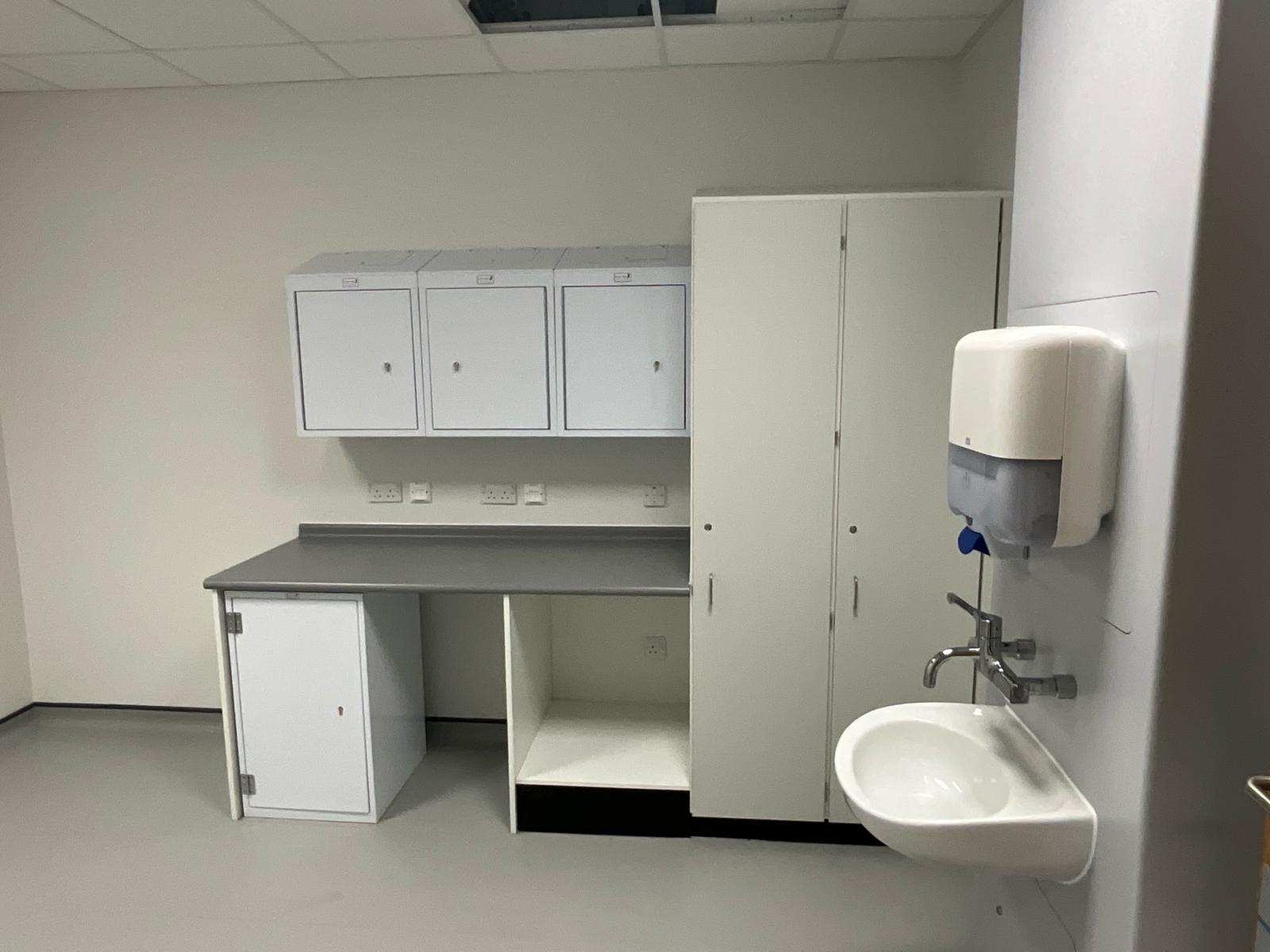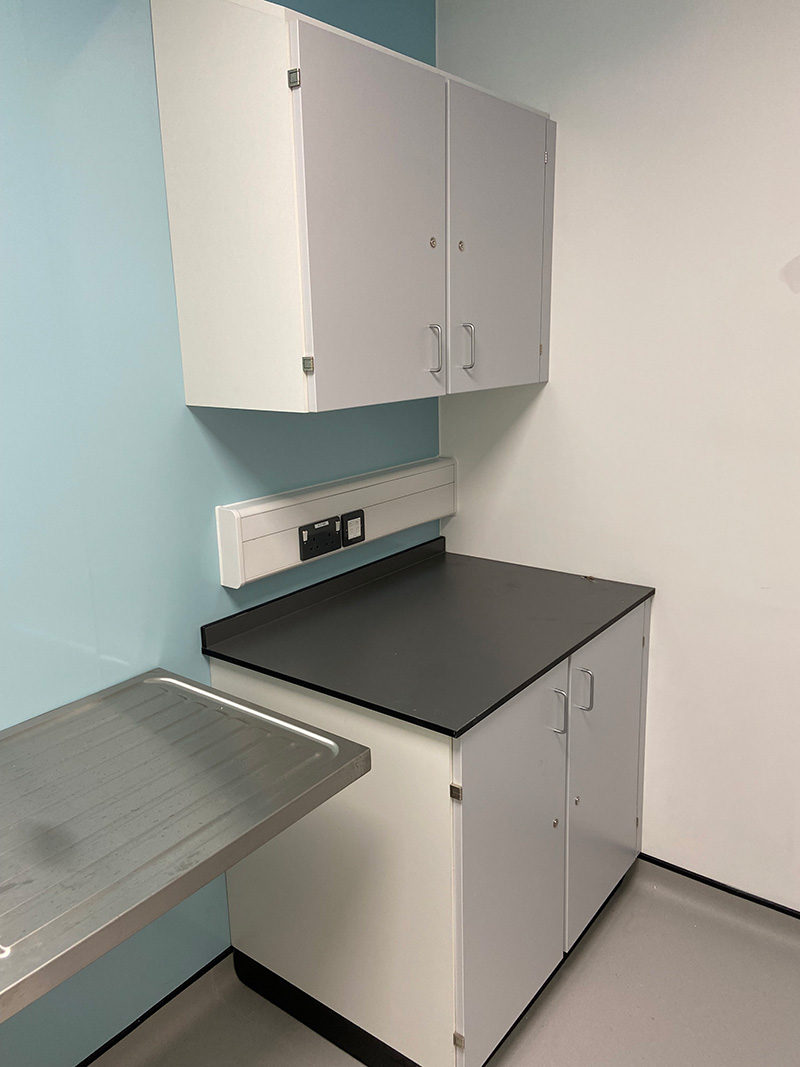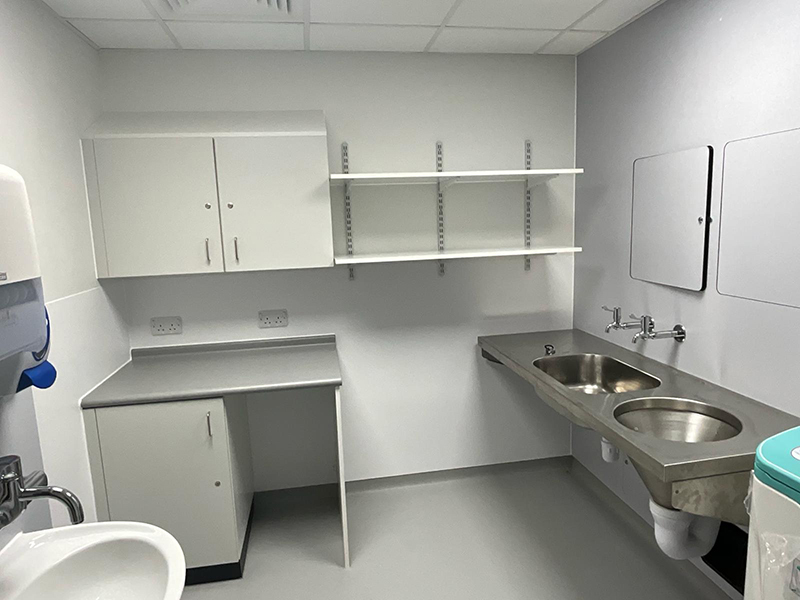Hospitals and clinics can be breeding grounds for bacteria and viruses. This is compounded by the need to treat sick patients, against a constant flow of personnel, which together create a high risk of cross-contamination. This is where the clean and dirty utility rooms really come into their own, acting as dedicated spaces for managing supplies, equipment and waste.
Consider a well-organised space, stocked with sterilised equipment, cleaning and medical supplies. This is the ideal clean utility room and here is where the focus is on maintaining a sterile environment to prevent the spread of pathogens.
Clean utility rooms should have separate entrances and exits to minimise traffic flow and potential cross-contamination. Equally as important, is an understanding for efficient organisation, which is why it is essential to install fitted cabinets, shelves and drawers designed specifically for healthcare environments - storage solutions that also include smooth, easy-to-clean surfaces to promote proper segregation of clean supplies.
For tasks such as prepping medications or assembling sterile equipment, well-designed workstations with non-porous surfaces and integrated sinks are particularly essential, together with readily accessible, hands-free handwashing stations, crucial for staff hygiene.
Clean utility rooms should adhere to rigorous protocols for cleaning and disinfecting surfaces, equipment and storage areas. Implementing a first-in, first-out (FIFO) system for supplies also ensures that the oldest items are used first, minimising waste and expiration risks.

Dirty utility rooms
In stark contrast to the sterile environment of the clean utility room, the dirty utility room tackles the "used" side of healthcare. This is where soiled linens, used medical equipment and biohazardous waste are collected, processed and disposed of safely. The dirty utility room should have designated areas for different types of waste, such as sharps containers, biohazard bins and dedicated laundry hampers. This promotes
proper segregation and waste management.
Durable sinks with deep basins and foot pedals are also essential for cleaning and disinfecting soiled equipment before further processing. Non-porous, seamless flooring, should also be included to facilitate easy cleaning to minimise the risk of bacteria.
Clean and dirty utility rooms function in a symbiotic relationship. The clean utility room relies on a steady flow of clean supplies from outside sources, while the dirty utility room efficiently removes the waste generated during patient care. Their effective operation is essential for maintaining a safe and sanitary environment for both patients and healthcare professionals.

At David Bailey Furniture, we understand the unique needs of healthcare facilities. We offer a comprehensive range of fitted furniture solutions specifically designed for clean and dirty utility rooms with units built to withstand the demanding environment of healthcare facilities, ensuring long-lasting functionality.
Smooth, non-porous surfaces and seamless construction ensure that thorough cleaning and disinfection can always be achieved. Our storage solutions are also designed to optimise space and promote clear segregation of supplies and waste with fitted furniture that complies with relevant healthcare regulations and prioritises staff safety.
Clean and dirty utility rooms may not be glamorous, but their role in healthcare environments is undeniable. By investing in well-designed, fitted furniture solutions and implementing efficient operational practices, these unsung heroes can continue to contribute to a cleaner, safer and more efficient healthcare environment.
In such cases, the benefits are enormous, most particularly with the reduced risk of hospital-acquired infections (HAIs). Maintaining a sterile and hygienic environment in both clean and dirty utility rooms play a critical role in minimising the risk of HAIs, which can lead to serious illness and prolonged hospital stays.
Proper waste management and handling practices in dirty utility rooms also reduce the risk of exposure to pathogens for healthcare workers and well-designed and organised utility rooms can streamline workflows, allowing staff to dedicate more time to direct patient care.
Equally as important, efficient storage solutions in clean utility rooms can help healthcare facilities maintain proper inventory levels and minimise stockouts of critical supplies. Proper waste segregation and disposal practices in dirty utility rooms can further help reduce waste management costs.

Healthcare environments are constantly evolving and as technology advances, we can expect to see new innovations in clean and dirty utility rooms. Looking into the future, we would not be surprised to see utility rooms that integrate smart fitted furniture solutions that automate inventory management, monitor temperature and humidity levels and alert staff to potential issues.
Eco-friendly materials and energy-efficient appliances will also likely become increasingly important for clean and dirty utility rooms, promoting a more sustainable healthcare environment – and who knows, we may even see autonomous robots used for cleaning and disinfecting surfaces in dirty utility rooms, further minimising the risk of exposure for staff.
Clean and dirty utility rooms may operate behind the scenes, but their role in maintaining a safe and efficient healthcare environment is critical. By understanding their unique needs and investing in functional, well-designed fitted furniture solutions, healthcare facilities can empower these unsung heroes to continue playing a vital role in patient care – and we will be there to help.
For further information, visit www.davidbaileyfurniture.co.uk

